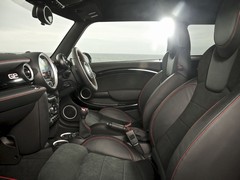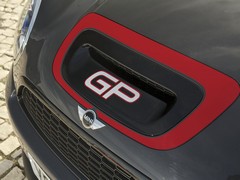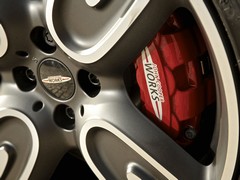Driven: Mini John Cooper Works GP
The GP impresses when it's on the track - but is it any good out on the road?
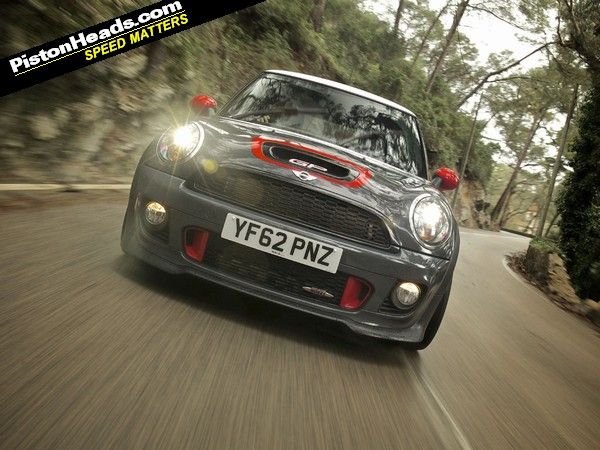
We’ve already been lucky enough to enjoy a quick squirt in the second-generation Mini John Cooper Works GP. Four laps of a track were enough to tell us that this is a very well-sorted little car; tremendous fun to drive and pretty quick, too. But can the same be said when it’s released from the confines of the circuit?
Easing out onto the road for the first time, and we’re squeezing our way along Lisbon’s congested streets. The ride quality isn’t great – the combination of rock-hard spring rates and a short wheelbase mean the GP crashes through potholes, and it doesn’t quite have the fluidity of a larger hot hatch like the Megane 265 Cup. That said, it isn’t quite as harshly-sprung as the old GP; there’s been some concession to usability here, and so much the better.
Nip and tuck
Get it out on an open road, though, and it becomes clear that that compromise hasn’t been made at the expense of handling. The GP is still an absolute blast. It’s flighty – the steering follows ruts and bumps in the road a little too easily, so you have to grasp the wheel firmly when you’re on a charge – but in doing so it asks you to commit to driving it properly. The brakes – six, yes, six-pot callipers on 330mm discs – are awe-inspiring, chopping the speed down seemingly instantaneously. Pitch it in, and the front end darts wherever you ask it to with a twitch of the wheel. Leave the traction control in GP Racing mode – a special option unique to the GP that turns off the ASC’s throttle intervention, leaving only the stability program’s braking in play – and it manages to assist without ever poking its nose in when it isn’t wanted. Lift off mid-corner, and the back end settles tidily without stepping out, allowing you to tune the car’s attitude neatly on the throttle. And if you’re not happy with the way it’s set up from the factory the suspension is fully adjustable, race car style.
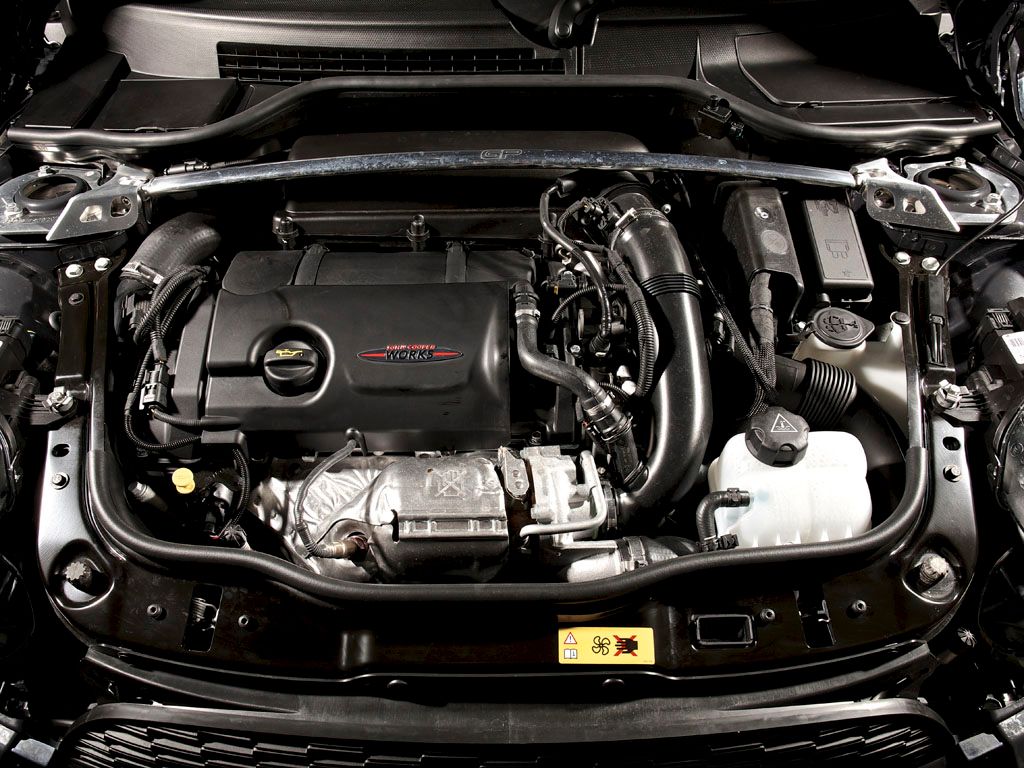
The engine, meanwhile feels like it’s been tuned for peaky power delivery, so unlike the normal JCWs, it isn’t all about mid-range wallop. Rather, the GP rewards the more it’s revved, begging you to stretch it right out to the red line. For anyone who bemoans the death of rev-happy cars, it’ll come as a welcome relief. There’s 218hp on offer here, although thanks to the car’s 1,160kg weight it feels like more. That’s matched to 192lb ft, with an overboost facility that brings torque up to 207lb ft under full-bore acceleration. 0-60 arrives in 6.3 seconds, with top-in-top coming up at 150mph.
Monetary policy
There is, however, a ‘but’. In fact, there are a few. Firstly, there’s the diff – this time round, it’s electronic. And as good a job as it does, it still isn’t quite as convincing as a mechanical equivalent – it cuts inside-wheel scrabble out, but it doesn’t slingshot you round the corner in quite the same way under power. Next, there’s the engine note – as great a powerplant as this is, it sounds just a touch anodyne compared with the characterful supercharger whine of the old car. Shame.
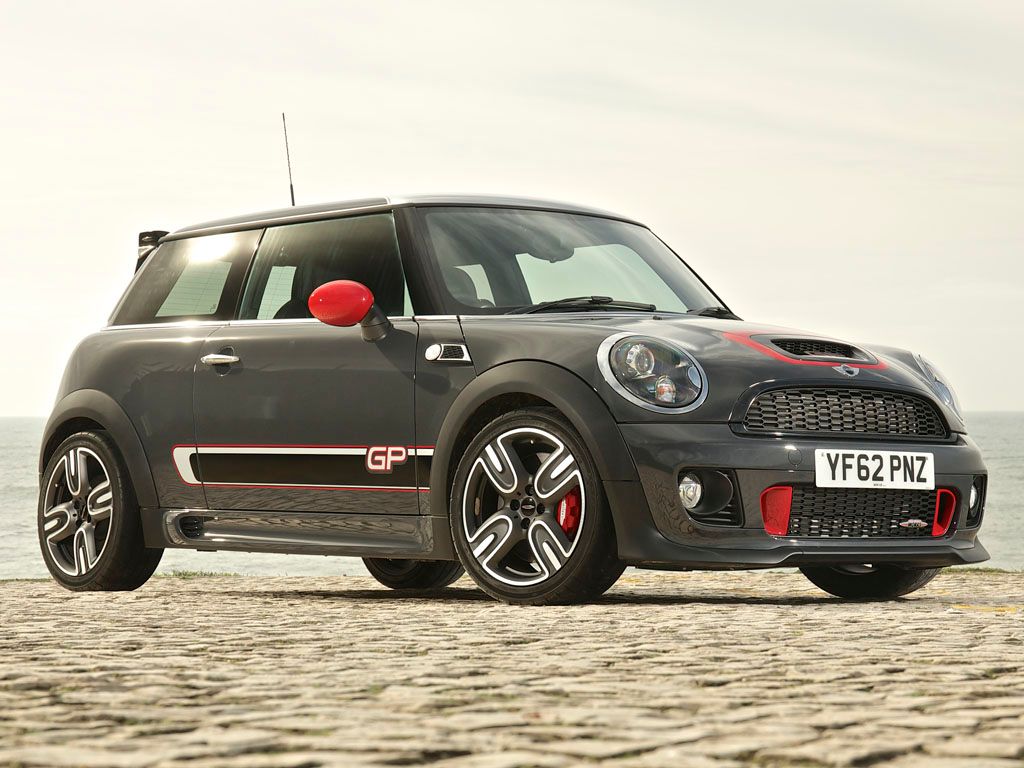
Huge fun. Not quite £29K's worth, mind.
The biggest problem, though, comes when one turns one’s attention to matters fiscal. Take a deep breath, and have a sit down, because the JCW GP comes in at a faintly astonishing £28,790 on the road. It’s hard to see how that price can be justified. We do, of course, bang on about the M135i being great value, but when it offers over 100hp more, plus rear-wheel-drive and, well, more car – a pair of back seats, for example – for very little extra, it becomes ludicrously difficult to make a case for the GP instead. Of course, it might be the GP’s pared-back ethos which appeals – but in that case we’d suggest you turn your attention to the afore-mentioned Megane 265 Cup, which offers more power, a proper diff, and just as entertaining a chassis – and, again, back seats – for three-and-a-half grand less.
Don’t get us wrong. The GP is a joyous, beguiling little car. And we’d be heartily recommending it if it cost £26,000. OK, it’d be a bit steep when you bear in mind the competition, but you could just about justify it on the basis of its slick styling, handsome interior, customisable suspension and great residuals. At just shy of £29,000, though, and as good as it is, the fact of the matter is it’s just too costly for all but die-hard Mini fans.
MINI JOHN COOPER WORKS GP
Engine: 1,598cc 4-cyl turbo
Transmission: 6-speed manual, front-wheel drive
Power (hp): 218@6,000rpm
Torque (lb ft): 192@1,750-5,750rpm (Overboost: 207)
0-62mph: 6.3sec
Top speed: 150mph
Weight: 1,160kg
MPG: 39.8 (combined)
CO2: 165g/km
Price: £28,790 OTR
I wish Abarth would do a stripped out version of the 500 for under 20k. It might not be the fastest thing going around the track but it would definately be the most fun.
Gassing Station | General Gassing | Top of Page | What's New | My Stuff

